

Table of contents
- When is the best time?
- General pruning data
- Useful information & pattern
- Maintenance and care cut
- taper cut
When is the right time to prune depends heavily on the growth and age of the plant. As a rule, the camellia only needs occasional pruning as it grows extremely slowly. With a timely pruning, the plant manages to recover much more easily afterwards. This can then form new buds again on the pruned shoot.
When is the best time?
Moderate warmth, a moist soil environment and a well-protected location are decisive for good growth and attractive flowering. Camellias are winter bloomers and develop their buds in midsummer. In the cool winter time, these buds mature and the flowering period begins, which can last until May, depending on the variety. The hardy camellia needs this cold period for flowering, so it is not suitable for keeping indoors. However, camellias thrive well in a bucket on the terrace and balcony, but then a protected winter quarters is required.
- Basically cut only after flowering
- Late spring is the ideal time
- Alternatively, cut in early summer
- Schedule pruning between May and July
- Prune before new shoots begin
- Pruning too late prevents the buds from forming
- Do not prune extremely young specimens
- Observe the plant when the time is right
- Always set pruning individually and depending on the plant
- The right time can vary depending on the variety
A notice:
Did you know that pruning is still possible in August when new buds have not yet formed.
General pruning data
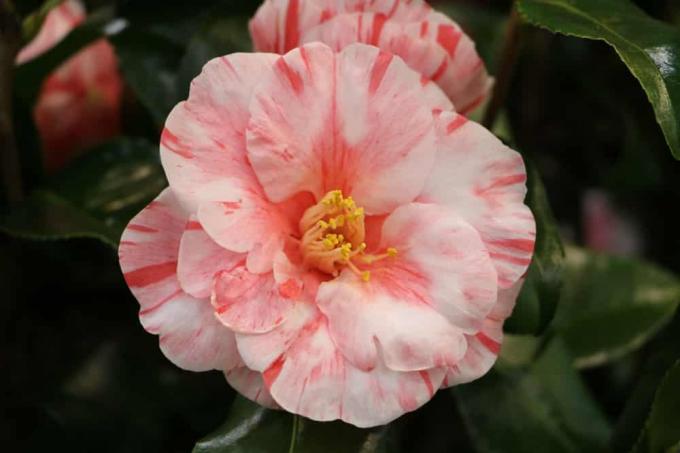
At the latest after the first flowering, the question arises as to whether the camellia needs pruning. Due to the small and slow growth, pruning should be done carefully. In addition, there must be sufficient substance in the plant before the first pruning takes place. The evergreen wood is indeed pruning compatible, but only in the further course of its life. In contrast to other plants, extreme pruning of the camellia does not stimulate growth in the long term.
Rather, the plant only suffers unnecessarily and then only develops weak shoots and puny flowers. Younger but already vigorously growing plants benefit from a topiary so that they can branch well and grow into beautiful bushy shrubs. Older specimens can also be trimmed more if they grow too much. When pruning, pay attention to the growth of the buds that form in the leaf axis. After pruning, all shoots should receive sufficient light.
- Cut only a little and properly
- Start pruning very carefully and carefully
- Always cut back in small increments
- In the case of beautifully growing specimens, only remove faded shoots
- Remove weakly growing and non-flowering wild shoots
- Cut approx. 2 cm above the base of the leaf
- Shorten shoots that are too long by a maximum of 1/3 of their length
- Shoot should dry out, but bud growth should remain
- Eye to be circumcised faces outward
- If possible, cut all shoots to the same length
Useful information & pattern
As plants, camellias have a clear and structured structure, so pruning is not complicated and easy to do even for hobby gardeners. Camellias bloom from the growth the plants achieved in the previous year. A shoot extends from one node to the next, from which the leaves then grow. If the pruning is done correctly, a new shoot and new buds can grow from this spot without any problems. In this way, the rainwater can drain off well and no pathogenic germs collect on the cut surface. In general, most varieties are hardy camellias, with the exception of the Japanese camellia. This can only overwinter outside in very mild and low-lying regions. Therefore, the Japanese camellia should be better cultivated in a bucket. In winter, you have to move to an unheated greenhouse or conservatory.
- Cut back along the knots
- Continue until the next side shoot
- Alternatively, prune to the next visible shoot
- Sharp pruning shears are extremely important
- Separate branch with one cut
- Interface must not fray
- Start cutting direction vertically
- Ideally cut immediately after flowering
- Regularly remove dead, diseased and rotten shoots
- Prune back until healthy growth is visible
Maintenance and care cut
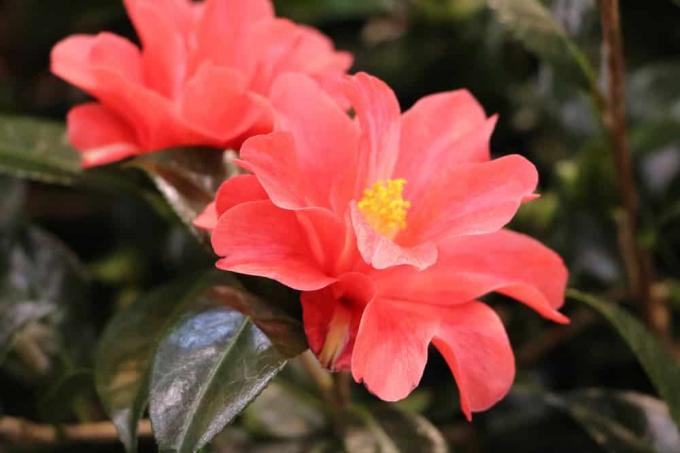
Pruning for maintenance and care is necessary for both younger and older plants. Only extremely young specimens should be left alone in the early days in order to be able to grow sufficiently. Younger plants benefit from regular pruning to form a nice branching. This allows the camellia to grow into a bushy shrub. In addition, the structure of the crown is supported by a properly performed care cut. However, the reasons for pruning a healthy camellia should be limited and not excessive. Excessive pruning can damage the plant's health and affect its immune system. As a result, it is more susceptible to disease and pest infestation.
- Regularly remove all dead branches
- Also eliminate diseased shoots
- Also cut off faded flowers
- Also cut off areas affected by pests
- Remove dead branches in the same way
- Thin out the inside of the crown, especially on larger specimens
- Pay attention to light transmission
- Discard branches that are too weak
- Always be very careful
- Do not unnecessarily impede bud growth
taper cut
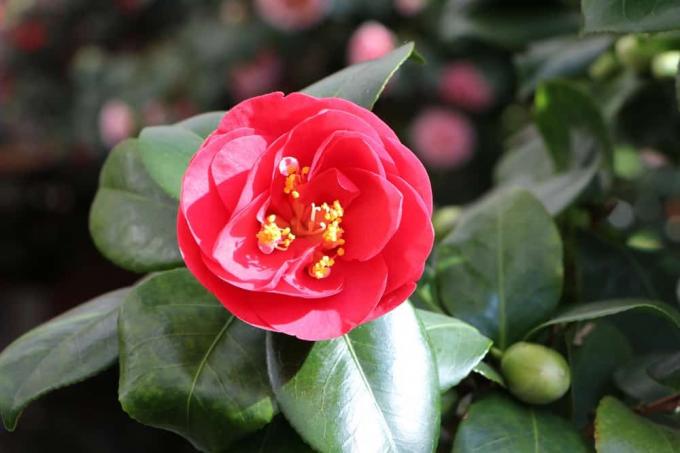
With advancing age, the growths can begin to grow enormously bulky and unsightly. If this is the case and the inner parts of the plant are no longer getting any light, then a rejuvenation pruning is in order. In this way, the camellia is brought back into an attractive shape. The goal is to support a decent growth of camellias. Especially with this pruning, there must be enough leafy branches and twigs so that the plant can recover well afterwards. If the specimens are large and strong and grown in a good location, then even deeper pruning is not a problem. With the right timing, the plants are encouraged to develop new buds again in a short period of time. In this way, the camellias can have long-lasting healthy growth.
- The goal is a rounded crown
- Remove individual shoots entirely
- Pay attention to the V-shaped direction of growth
- Plant should harmoniously taper from top to bottom
- Support airy crown formation
- Always be moderate
- Never cut off too much
- Make taper cut step by step
- Possibly even over several years
- Be particularly careful with plants in pots
 Home editorial office
Home editorial office
Learn more about pruning

Eucalyptus dried up: cut back now?
When a eucalyptus dries up, some owners immediately think of cutting it back. Because they want to see fresh green bud quickly. The chances of that happening may be good. But one thing must not be left out: research into the causes! Otherwise a new cycle of drying up and cutting begins.
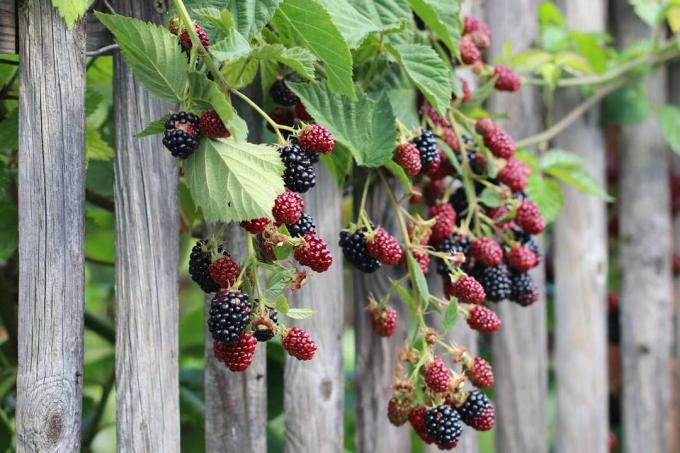
Cut blackberries: Instructions for the right cut
Bramble branches only bear fruit for one summer, after which they are used up and die off in winter. It's a good thing that new canes grow back in time for the following year. Cutting care means: What no longer supports should be removed, young rods must be optimally trained.

cutting snowball | 13 tips for pruning
When it comes to snowballs (Viburnum), the opinions of numerous hobby gardeners differ when it comes to cutting. Main reason against pruning: Destruction of the natural appearance by pruning. Find out now when it is unavoidable and which tips should be heeded.

Cutting sage: 6 tips for cutting back
Cutting measures and their ideal time depend on the species of sage plants, because they have differentiated ways of life. There are woody and herbaceous representatives that require different attention. In order to carry out the measures, a basic set of tools is helpful.

Pruning hydrangeas: when is the right time?
Hydrangeas are a real beauty because of their flowers. In the long term, however, the flowering power is only maintained if regular pruning takes place. Because cutting off withered or dried plant parts offers protection. The following guide shows when this measure should be taken.
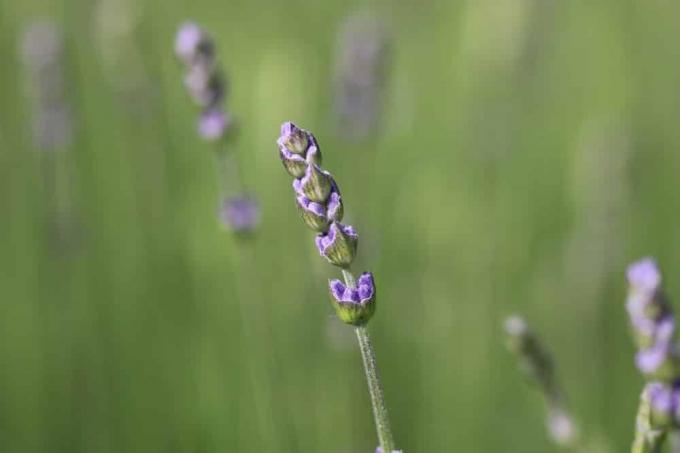
Cutting Lavender | When is the best time?
Lavender is a popular perennial, but difficult to cut. Without regular pruning, the shrub becomes lignified and less robust. Choosing the right time is important for pruning. When to cut depends on the use of the perennials.



